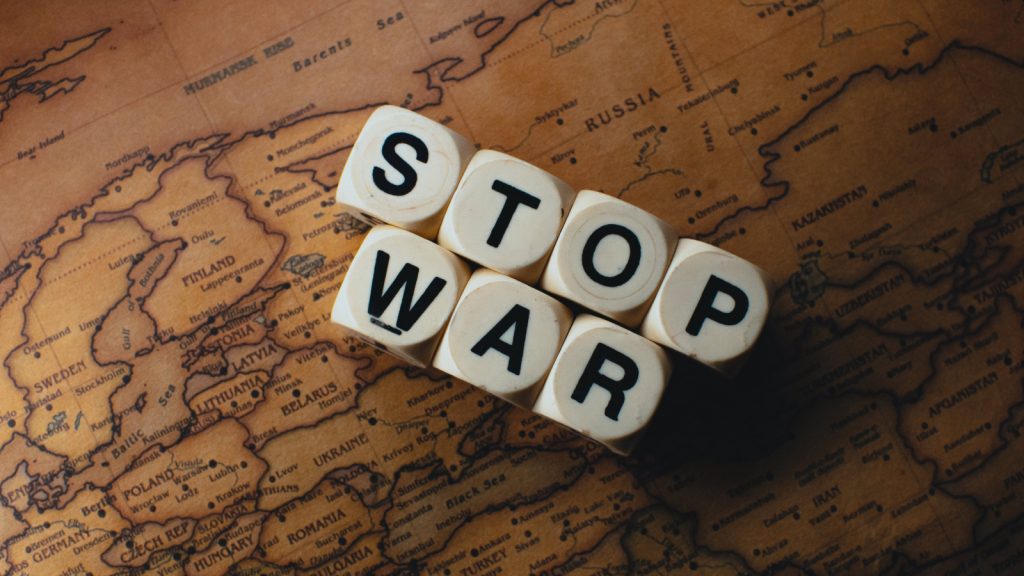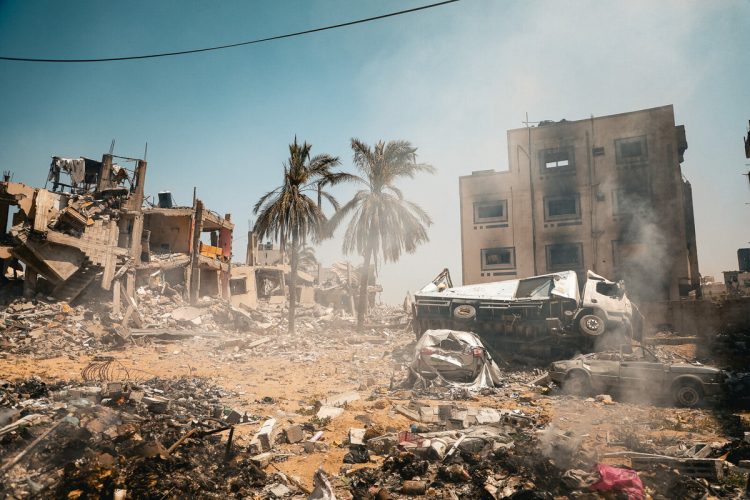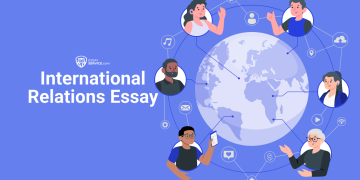Prologue: A Divided World Watching
In April 1994, as reports of mass killings in Rwanda reached global newsrooms, the international community hesitated. Some argued for urgent intervention to stop the genocide; others warned that foreign military involvement could worsen the chaos or reignite colonial resentments.
The paralysis cost hundreds of thousands of lives, and the debate over when—and how—the world should intervene in armed conflicts has never ceased.
Today, similar arguments arise in places like Ukraine, Gaza, Myanmar, Sudan, and Yemen. Should powerful states and global organizations intervene to halt atrocities and protect civilians? Or should they restrain themselves, respecting sovereignty and avoiding the unintended consequences of military engagement?
This article explores this enduring debate by presenting contrasting viewpoints, tracing historical precedents, and reflecting on the ethical and strategic dilemmas of intervention.
Part I: The Case for Intervention
1. The Moral Imperative
- Advocates of intervention argue that the international community has a duty to protect populations from genocide, ethnic cleansing, war crimes, and crimes against humanity.
- The doctrine of the Responsibility to Protect (R2P), endorsed by the UN in 2005, asserts that sovereignty is not a license to slaughter one’s own people.
- Philosopher Michael Walzer famously contended that intervention may be morally justified when it prevents “supreme humanitarian emergencies.”
Example:
In Kosovo (1999), NATO’s intervention—though lacking explicit UN Security Council authorization—stopped large-scale killings and displacement, later seen by some as a humanitarian necessity.
2. Security and Containment of Violence
- Conflicts often spill across borders, destabilizing entire regions through refugee flows, cross-border insurgencies, and transnational terrorism.
- Early intervention can prevent local wars from becoming regional crises.
- Advocates argue that inaction often emboldens aggressors, increasing the eventual human and financial costs.
Example:
The international military coalition against ISIS (2014–2019) helped roll back the group’s territorial control and reduced its capacity to launch attacks abroad.
3. Upholding International Norms
- Proponents emphasize that allowing war crimes to go unchallenged undermines global rules and institutions.
- If powerful states can commit atrocities without consequences, norms against aggression and civilian targeting lose their deterrent effect.
- Intervention thus becomes not only a moral duty but also a practical tool for reinforcing international law.
Example:
Post–World War II interventions in the Korean War (1950) and the Gulf War (1991) were justified as defending the UN Charter’s prohibition on territorial conquest.
Part II: The Case for Restraint
1. Respect for Sovereignty
- Opponents warn that frequent interventions risk eroding the principle of state sovereignty, a cornerstone of international order since the Peace of Westphalia (1648).
- They argue that even oppressive governments may be replaced only by their own people, and that outside interference often provokes nationalist backlash.
Example:
Russia’s justification for its 2014 annexation of Crimea—claiming to “protect Russian speakers”—shows how humanitarian rhetoric can be misused to mask aggression.
2. Unintended Consequences
- Interventions often unleash chaotic power vacuums, civil strife, or prolonged occupations.
- The 2003 U.S.-led invasion of Iraq toppled a brutal dictator but also dismantled state institutions, contributing to years of sectarian violence and the rise of ISIS.
- Military action can destroy infrastructure and livelihoods, creating humanitarian crises equal to or worse than those it sought to prevent.
3. Geopolitical Rivalries and Selective Action
- Critics point out that interventions are often driven by strategic interests rather than humanitarian concern, leading to accusations of double standards.
- Selective action—helping some countries while ignoring others—undermines the credibility of international norms.
- Major powers may exploit interventions to expand influence, fueling new conflicts rather than resolving them.
Example:
The NATO intervention in Libya (2011) initially aimed to protect civilians but evolved into regime change, leaving a fractured state and a breeding ground for armed militias.
4. Local Agency and Ownership
- Sustainable peace, critics argue, can only emerge from domestic political processes.
- Outsiders may lack understanding of local contexts and risk imposing unsuitable governance models.
- Grassroots movements and local reconciliation efforts often succeed where external interventions fail.
Example:
The peace process in Mozambique (1992) was largely brokered by domestic actors with international support, demonstrating that external forces need not dominate.

Part III: Historical Flashpoints of the Debate
Rwanda (1994)
- A tragic emblem of restraint gone too far: the world’s failure to intervene early in the genocide cost over 800,000 lives.
Kosovo (1999)
- Intervention without UN authorization saved lives but raised questions about undermining the international legal order.
Iraq (2003)
- A powerful reminder that military intervention without international consensus can destabilize entire regions.
Libya (2011)
- Highlighted the dangers of mission creep—humanitarian action turning into regime change.
Syria (2011–present)
- Illustrates the limits of both intervention and restraint: external powers intervened indirectly, while the world failed to stop mass atrocities.
Part IV: The Middle Ground—Rethinking Intervention
1. A Spectrum of Engagement
Intervention need not mean large-scale invasion. Tools include:
- Preventive diplomacy and mediation
- Targeted sanctions on perpetrators
- Arms embargoes and ceasefire monitoring
- Limited military support for civilian protection
- Post-conflict peacebuilding and reconstruction
2. Shared Responsibility
- Intervention should be pursued multilaterally, under legitimate international mandates, to reduce perceptions of neocolonialism.
- Regional organizations—such as the African Union (AU)—can provide culturally informed leadership, supported by global institutions.
3. Emphasizing Prevention
- Early-warning systems, development assistance, and conflict-sensitive climate adaptation can address root causes before violence escalates.
- Prevention is more cost-effective than post-crisis intervention.
4. Learning from Past Mistakes
- The world must move beyond both paralyzing inaction and reckless unilateralism.
- Each case demands context-sensitive approaches, balancing humanitarian imperatives with respect for sovereignty and local agency.
Part V: Perspectives from Stakeholders
The Policymaker
“We cannot look away when civilians are slaughtered, but we must also remember that power without legitimacy breeds resistance.”
The Peace Activist
“Intervention often means bombs and armies. Real peace comes from dialogue, justice, and addressing inequality.”
The Refugee
“We wanted the world to help us, not to fight another war on our land.”
The Soldier
“We were told we were liberators, but when we arrived, we were seen as invaders.”
Part VI: Toward a New Framework
- Clearer Global Norms: Refine R2P to specify triggers, proportional responses, and exit strategies.
- Regional Leadership: Empower regional organizations to lead interventions with global backing.
- Integrated Peacebuilding: Pair interventions with long-term reconstruction, governance reform, and reconciliation.
- Technology for Protection: Use satellite surveillance, drones, and cyber tools to deter atrocities without full-scale deployment.
- Civil Society Participation: Include local communities and NGOs in planning and implementing interventions.
- Balanced Burden-Sharing: Encourage equitable participation by both developed and developing countries in intervention efforts.
Epilogue: A Fragile Consensus
The debate over intervention versus restraint is unlikely to end. Each new conflict brings renewed arguments, shaped by unique histories and geopolitical dynamics.
The challenge for the 21st century is to avoid the twin dangers of paralyzing inaction and reckless overreach. The world must strive for a pragmatic middle path—one that prioritizes human dignity, minimizes harm, and strengthens rather than undermines international order.
As a Rwandan survivor once told a UN inquiry:
“We didn’t ask the world to save us forever. We asked them to stop the killing when they could.”
This voice still echoes whenever the world hesitates on the brink of action.

















































